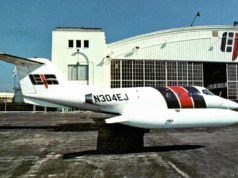When on final approach to landing, the co-pilot monitors the instrument panel and will at some point turn to the captain and report, “Three in the green.” Translation: three green lights have illuminated, indicating that the nose gear and two main gear are extended and locked and thus it’s safe to put the aircraft down on the runway.
I’ve often written this column from wherever my frequent travels take me: sales trips and conferences, a family cruise, and from the annual National Business Aviation Association convention. NBAA2015, which takes place Nov. 17-19 in Las Vegas, will be the 43rd I’ve attended. A world-class event, it will bring together 46,000 aviation colleagues and friends from around the globe, including aircraft and avionics manufacturers, FBOs and other service providers, and finance and insurance suppliers, among others – including many of you.
But travel is not without risk, a fact of which I am at the moment acutely aware. You see, this time I’m writing to you from the ICU of our local hospital, where I was admitted after an infection suddenly worsened and laid me low. Not to worry, I’m making steady headway on the path to full recovery.
Moreover, the attending nurses are caring and competent and have a wonderful human touch. And, as with your aircraft, all my “systems” – blood pressure, pulse, oxygen, temperature, meds, and fluids – are being carefully and constantly monitored electronically. If any go in the wrong direction, the computer beeps loudly, the medical team responds instantly, and the proper adjustments are made. Turns out, an ICU operates much like a flight deck, but with crash carts and needles at the ready instead of checklists and a fire ax.
You think a mishap or malady can’t happen to you – until it does.
When and if illness or injury should befall you during your travels, heading out immediately aboard your aircraft often is not your safest option. In this issue, Dr. Christopher Sidford tells why you need to plan ahead – and what to do when medical emergencies occur in “When You Can’t Just Fly Home Again.”
In our cover story, “Every Breath You Take,” Industrial Hygienist Judith Anderson explains why that unpleasant smell in your cabin may be not only irritating, but actually hazardous to your health. She describes what you can do to help protect you, your crew, and your passengers from cabin air pollution.
And Richard H. Heist of Embry-Riddle Aeronautical University describes the potential risk to your aircraft and your own safety posed by the rapidly growing fleet – there are hundreds of thousands of them out there already – of remotely-piloted Unmanned Aircraft Systems in “Rise of the Machines.”
The issue’s focus on health and well-being was intended from its conception to help protect all. But considering my unexpected circumstances, the theme resonates especially with me.
Right now, all my vital signs are showing improvement – I’m “six in the green” – and hope you are too! Let’s toast to good health at NBAA2015. BAA
Publisher of Business Aviation Advisor, has nearly 50 years in business aviation including executive positions at aircraft management/charter and ground services companies. He is a past director of the NATA and Corporate Angel Network.





